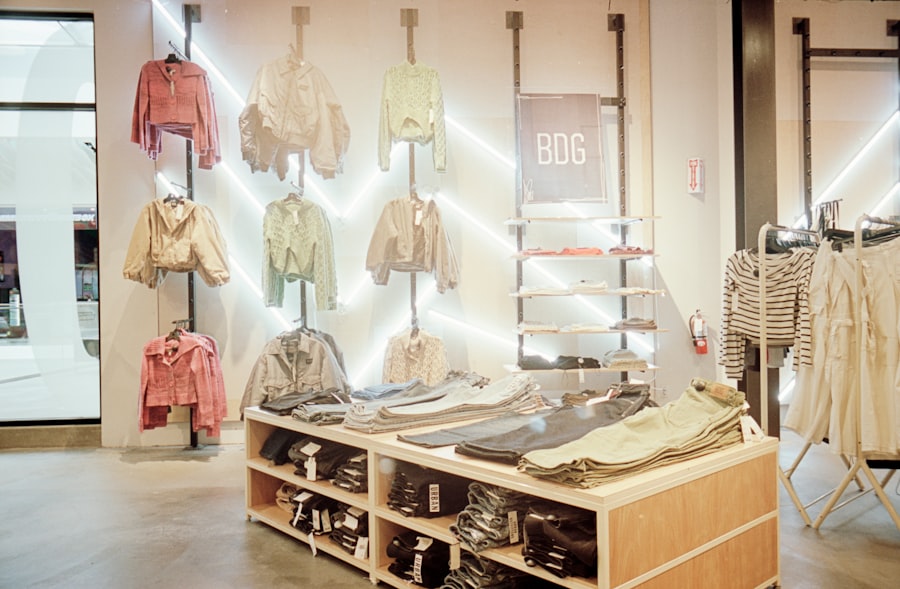As I delve into the world of e-commerce, one of the first things that caught my attention was the WooCommerce Storefront theme. This theme serves as a robust foundation for any online store, offering a clean and responsive design that is both user-friendly and visually appealing. Built specifically for WooCommerce, it seamlessly integrates with the plugin, ensuring that I can manage my products and sales without any hiccups.
The Storefront theme is not just about aesthetics; it is also about functionality. It provides a solid framework that allows me to customize my store according to my brand’s identity while maintaining optimal performance. What I find particularly appealing about the Storefront theme is its flexibility.
It comes with a variety of layout options and customization features that enable me to tailor my online store to meet my specific needs. Whether I want to showcase a single product or a vast catalog, the Storefront theme adapts effortlessly. Additionally, its compatibility with various WooCommerce extensions means that I can enhance my store’s capabilities without worrying about conflicts or performance issues.
Understanding these foundational aspects of the Storefront theme has been crucial in my journey to create an engaging and effective online shopping experience.
Key Takeaways
- The WooCommerce Storefront Theme is a popular and versatile theme for online stores, offering a clean and minimalist design with a focus on functionality.
- Customizing the Storefront Theme’s layout can be done through the use of child themes, allowing for changes to the design and structure without affecting the original theme.
- Implementing advanced CSS customizations can further enhance the appearance and functionality of the Storefront Theme, allowing for unique and personalized designs.
- Integrating custom fonts and typography can help to establish a strong brand identity and improve the overall visual appeal of the online store.
- Enhancing the user experience with advanced navigation techniques, such as mega menus and sticky headers, can improve usability and make it easier for customers to find what they are looking for.
Customizing the Storefront Theme’s Layout
Once I grasped the basics of the WooCommerce Storefront theme, I was eager to explore how to customize its layout. The layout options available are extensive, allowing me to create a unique look for my store that reflects my brand’s personality. I began by experimenting with different header styles, footers, and sidebar placements.
Each adjustment I made had a significant impact on the overall user experience, making it essential for me to consider how each element would interact with my customers. One of the standout features of the Storefront theme is its built-in layout controls. I discovered that I could easily modify the arrangement of product listings, change the number of columns displayed, and even adjust the spacing between elements.
This level of customization empowered me to create a visually appealing storefront that not only attracted visitors but also encouraged them to explore further. By carefully considering the layout, I was able to guide potential customers through their shopping journey, ultimately leading to higher engagement and conversion rates.
Implementing Advanced CSS Customizations

As I became more comfortable with the Storefront theme, I felt compelled to take my customizations a step further by implementing advanced CSS modifications. CSS allows me to fine-tune the appearance of my store beyond what is achievable through standard settings. With a bit of coding knowledge, I was able to change colors, fonts, and even animations to create a more dynamic shopping experience.
This level of customization not only enhanced the visual appeal of my site but also helped establish a stronger brand identity. One of my favorite CSS tweaks involved adjusting button styles and hover effects. By changing the color scheme and adding subtle animations, I was able to create buttons that stood out and encouraged clicks.
Additionally, I experimented with spacing and alignment to ensure that all elements were visually cohesive. The beauty of using CSS for these customizations is that it allows for a high degree of creativity while still maintaining the integrity of the Storefront theme’s responsive design. As I continued to refine my store’s appearance through CSS, I found that these small changes made a significant difference in how users interacted with my site.
Integrating Custom Fonts and Typography
Typography plays a crucial role in any online store’s design, and I quickly realized that integrating custom fonts into my WooCommerce Storefront theme could elevate my site’s overall aesthetic. The default fonts are functional, but they often lack personality. By selecting fonts that resonate with my brand’s voice, I was able to create a more cohesive and engaging shopping experience for my customers.
There are numerous resources available for sourcing custom fonts, including Google Fonts and Adobe Fonts, which made it easy for me to find options that suited my style. Implementing custom fonts was straightforward thanks to the flexibility of the Storefront theme. I utilized plugins that allowed me to easily integrate these fonts without needing extensive coding knowledge.
Once integrated, I experimented with different font sizes, weights, and styles across various elements of my site, including headings, product descriptions, and buttons. This attention to typography not only improved readability but also contributed to a more polished and professional appearance. Ultimately, integrating custom fonts helped me convey my brand’s message more effectively while enhancing the overall user experience.
Enhancing the User Experience with Advanced Navigation
A seamless navigation experience is vital for any online store, and as I worked on customizing my WooCommerce Storefront theme, I focused on enhancing this aspect significantly. A well-structured navigation menu allows customers to find what they are looking for quickly and efficiently, which can lead to increased sales and customer satisfaction. I began by organizing my product categories logically and ensuring that they were easily accessible from the main menu.
To further improve navigation, I explored options such as mega menus and dropdowns. These features allowed me to display multiple categories at once without overwhelming visitors with too much information at once. Additionally, I implemented breadcrumb navigation to help users keep track of their location within the site hierarchy.
This small addition made it easier for customers to backtrack if they needed to refine their search or explore related products. By prioritizing user experience through advanced navigation techniques, I was able to create a more intuitive shopping environment that encouraged exploration and ultimately led to higher conversion rates.
Optimizing Product Pages for Conversions

As I continued refining my WooCommerce Storefront theme, optimizing product pages became a top priority in my quest for higher conversions. Product pages are often where potential customers make their final purchasing decisions, so it was essential for me to ensure they were as effective as possible. I started by focusing on high-quality images and detailed descriptions that accurately represented each product.
This attention to detail helped build trust with potential buyers and provided them with the information they needed to make informed decisions. In addition to visuals and descriptions, I also experimented with various layout options for product pages. By strategically placing call-to-action buttons and incorporating customer reviews, I aimed to create an engaging experience that encouraged users to add items to their carts.
Furthermore, I utilized upselling techniques by showcasing related products or frequently bought together items on each product page. This not only increased average order value but also enhanced the overall shopping experience by providing customers with additional options tailored to their interests.
Leveraging Advanced WooCommerce Widgets and Plugins
To further enhance my WooCommerce Storefront theme’s functionality, I began exploring advanced widgets and plugins designed specifically for WooCommerce stores. These tools can significantly extend the capabilities of my online shop without requiring extensive coding knowledge or technical expertise. For instance, I integrated product sliders that showcased bestsellers or new arrivals on my homepage, drawing attention to key items while keeping the layout clean and organized.
Additionally, I discovered plugins that allowed me to implement features such as wish lists and product comparisons. These functionalities not only improved user engagement but also encouraged customers to return to my site after their initial visit. By leveraging these advanced widgets and plugins, I was able to create a more dynamic shopping experience that catered to various customer preferences while streamlining the purchasing process.
Testing and Troubleshooting Customizations
As I implemented various customizations in my WooCommerce Storefront theme, testing became an essential part of my workflow. It was crucial for me to ensure that all changes functioned correctly across different devices and browsers. To achieve this, I conducted thorough testing after each significant modification, checking for any issues related to layout or functionality.
This proactive approach allowed me to identify potential problems early on and address them before they could impact user experience. Troubleshooting became an integral part of refining my online store as well. Occasionally, certain customizations would conflict with existing plugins or settings within the Storefront theme itself.
In these instances, I relied on community forums and documentation provided by WooCommerce developers for guidance on resolving issues effectively. By staying vigilant in testing and troubleshooting my customizations, I ensured that my online store remained functional and user-friendly while providing an enjoyable shopping experience for all visitors. In conclusion, customizing the WooCommerce Storefront theme has been an enriching journey filled with learning opportunities and creative expression.
From understanding its foundational elements to implementing advanced features like custom fonts and enhanced navigation, each step has contributed significantly to building an engaging online store that resonates with customers. As I continue refining my e-commerce presence, I’m excited about exploring new possibilities within this versatile platform while striving for excellence in every aspect of my online business.
For those looking to enhance their WooCommerce storefront with advanced customization techniques, it’s essential to consider the broader context of managing an online store efficiently. A related article that might be of interest is about sending email using CyberPanel. This guide can be particularly useful for store owners who need to ensure their transactional emails are reliably delivered, which is a crucial aspect of maintaining customer satisfaction and smooth operations in an e-commerce environment.
FAQs
What is the WooCommerce Storefront theme?
The WooCommerce Storefront theme is a free WordPress theme specifically designed for use with the WooCommerce plugin. It provides a clean and professional layout for online stores.
What is advanced customization of the WooCommerce Storefront theme?
Advanced customization of the WooCommerce Storefront theme involves making extensive changes to the theme’s design, layout, and functionality beyond what can be achieved through the theme’s built-in customization options.
What are some examples of advanced customization for the WooCommerce Storefront theme?
Examples of advanced customization for the WooCommerce Storefront theme include customizing the header and footer, creating custom page templates, integrating custom fonts and typography, and modifying the layout and design of product pages.
What skills are required for advanced customization of the WooCommerce Storefront theme?
Advanced customization of the WooCommerce Storefront theme requires a strong understanding of HTML, CSS, and PHP, as well as experience working with WordPress themes and the WooCommerce plugin.
Are there any tools or resources that can help with advanced customization of the WooCommerce Storefront theme?
Yes, there are various tools and resources available to help with advanced customization of the WooCommerce Storefront theme, including code editors, developer documentation, and online communities and forums for support and guidance.
